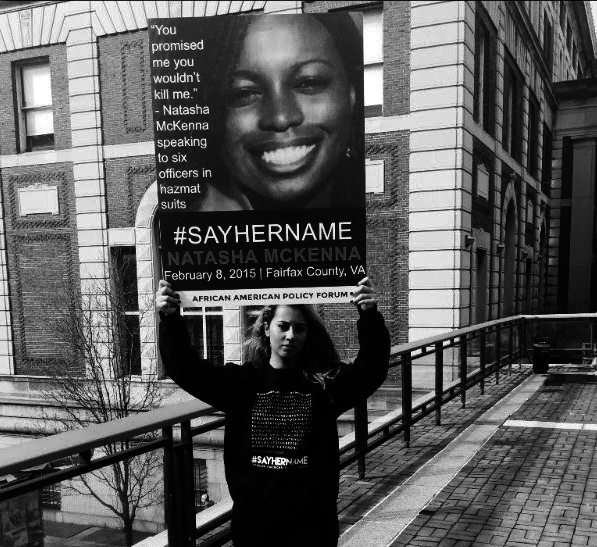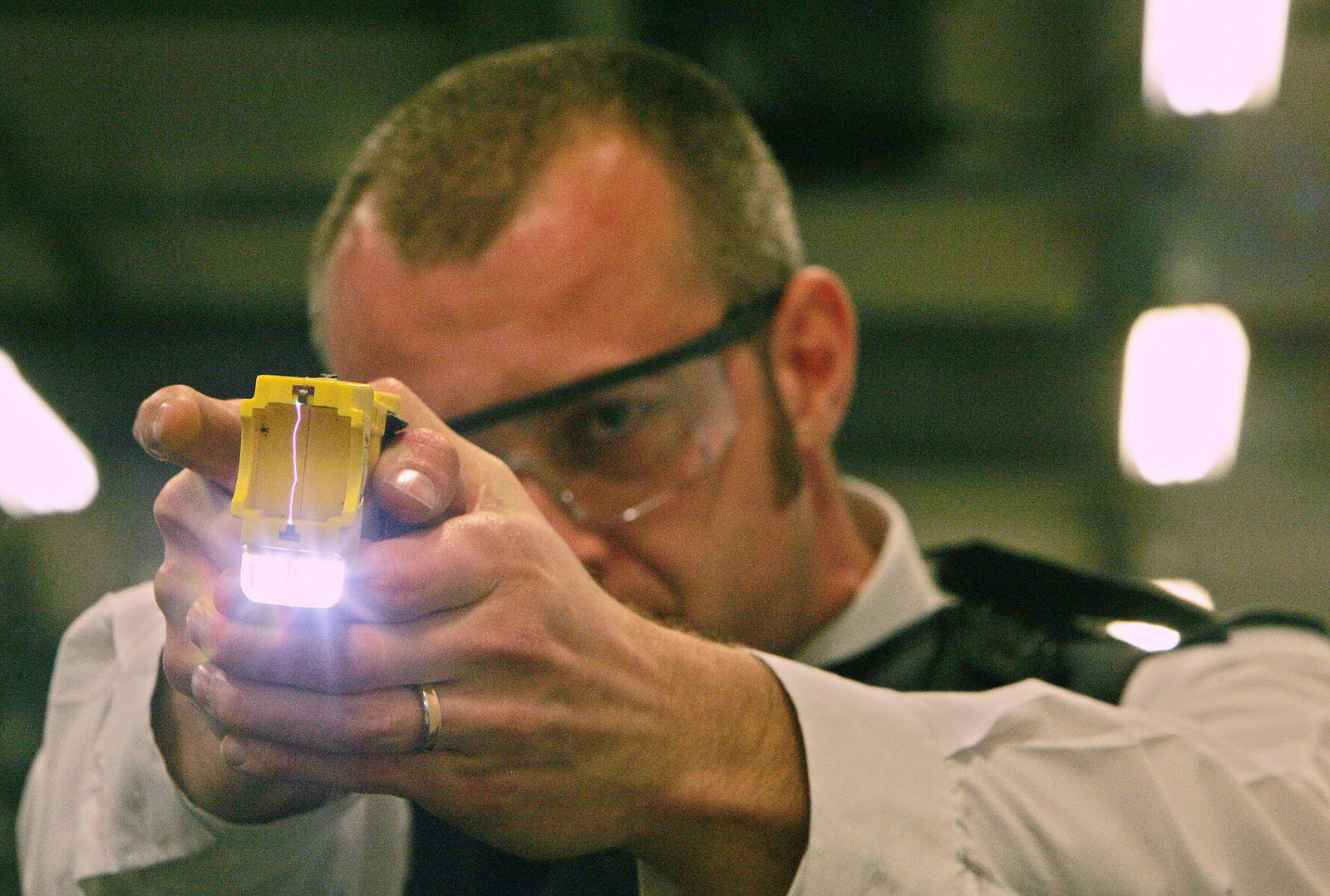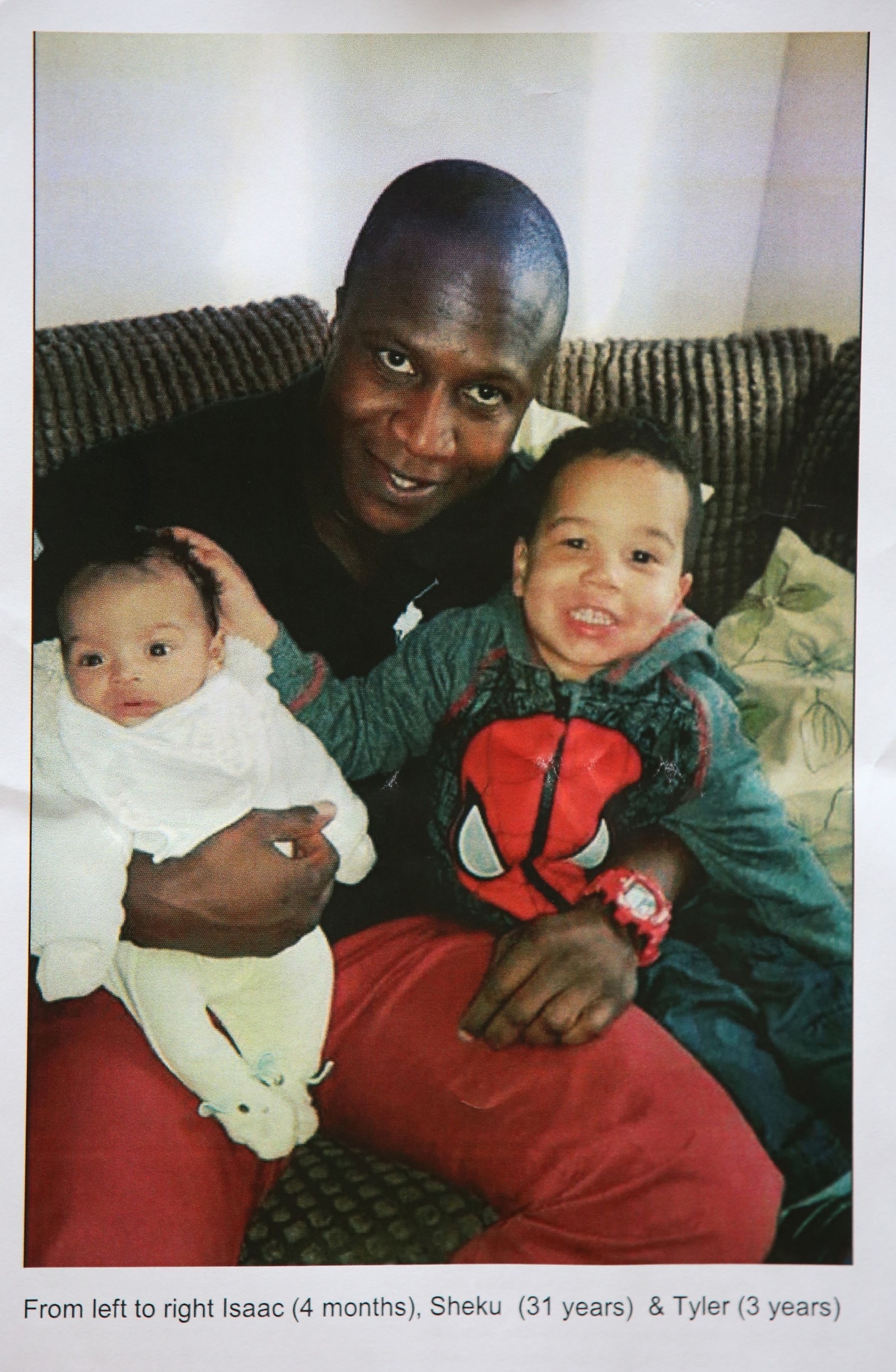
During the summer of 2011, 25-year-old Jacob Michael died after being restrained by 11 police officers outside his home. Just 45 minutes prior to his death he had dialled 999 saying he feared for his life.
Witnesses saw Michael being repeatedly hit with police batons, moments after two officers from Cheshire constabulary released pepper spray into his face, the BBC reported. CCTV footage showed officers holding Michael down on the floor. There was evidence that he had broken ribs and a torn liver.
An inquest into his death concluded that Michael died from cocaine-induced "excited delirium" – a controversial medical condition you probably haven't heard of. The jury delivered a narrative verdict saying that officers were inadequately trained in identifying excited delirium, which may have contributed to his death.

His family were not satisfied with this. "As far as I'm concerned, if the police didn't treat my lad the way they did, he would be here today," Michael's father said. "He did nothing wrong, he hadn't committed any crime, he rang the police for help."
Excited delirium is a disputed medical condition that describes a state that can include being aggressive, being unaffected by pain, and exhibiting extraordinary strength.
Information obtained by BuzzFeed News from the Independent Police Complaints Commission (IPCC) shows that since 2004 in England and Wales there have been 13 people who have died in police custody with excited delirium cited as their cause of death.
In a report published by the Royal College of Emergency Medicine in May of this year, excited delirium is described as a “medical emergency”. At any time, those with the condition could collapse or have a heart attack with little or no warning, it warns.
The physical symptoms of excited delirium are numerous and varied. They include psychosis, extreme aggression or violence, excessive strength, insensitivity to pain, and the ability to engage in constant physical activity without becoming tired. The person might experience a dramatic increase in their body temperature, which leads to profuse sweating and the inappropriate removal of clothing. Their heart rate and breathing might be abnormally fast.
The condition is thought to be triggered by drug abuse and, in a smaller number of cases, pre-existing serious mental illness. Cases most commonly involve men, according to the American College of Emergency Physicians.
There are well-documented cases of people presenting excited delirium symptoms who have survived when they are immediately treated by medical professionals. But the use of the term is becoming a key factor in the growing concern over how and why people die when they are being restrained by police.
Cases in police custody seem to follow a very similar pattern of events, which often leads to the same tragic result – a death and a family fighting for answers and sometimes accusing authorities of "whitewashing" what happened.
But medical professionals can't agree on how the term should be used, and there’s no agreed way of diagnosing the condition.
In the majority of high-profile excited delirium cases, post-mortem examinations show that victims were generally found to have taken large amounts of cocaine or amphetamines.
The drugs lead to the classic symptoms – a substantial spike in the person’s heart rate, breathing, and body temperature. The condition's also linked to psychosis: The person becomes detached from reality, seeing and hearing things that are not there, and believing they are in danger. It’s likely that they will behave in a bizarre manner – running into traffic, jumping over fences, or trying to get into other people’s houses, for instance.
"Cases in police custody seem to follow a similar pattern – a death and a family fighting for answers."
Understandably, this behaviour often leads to the police being called. And this is where the controversy begins. When excited delirium is named as a cause of death after someone has been restrained by police, concerns have been expressed that it doesn’t exist and is a made-up medical condition used as a cover-up for police brutality – particularly in the US where the term has been used more frequently, and perhaps more loosely, than in the UK.
One academic told BuzzFeed News he thinks police could even feel incentivised to report the signs of the condition, which could then serve to head off potential wrongful death charges.

In the UK, excited delirium, or acute behavioural disturbance as it has also been referred to more recently, is a term recognised by police forces, ambulance services, and the Faculty of Forensic and Legal Medicine.
Alongside the 13 people in custody recorded as having died in police custody in England and Wales since 2004, the IPCC said there were six other deaths where the person showed similar symptoms. However, the specific term "excited delirium" was not included in their post-mortem reports. BuzzFeed News understands there may be further deaths where a person displayed relevant symptoms without the condition being cited.
The inconsistency arises mostly because of a spectrum of opinion about the use of the term among medical professionals. Some pathologists use the term, but others prefer not to – even when a person presents with the classic symptoms.
Forty-five-year-old Ricky Penfold from Woodford Green, east London, died after being restrained by police officers in 2008. Several witnesses said Penfold was seen head-butting cars, smashing windows, and behaving in an erratic manner, The Guardian reported. Other witnesses said they saw him with blood dripping from his head and carrying a weapon. However, although Penfold’s behaviour showed all the key signs of excited delirium, his cause of death was put down as “a cardiac arrest due to cocaine toxicity”.
"When examining a body you’ll generally find nothing apart from relatively high cocaine levels."
A forensic pathologist, who has worked on a number of excited delirium cases during his career, agreed to speak to BuzzFeed News but asked to remain anonymous due to the controversy surrounding the issue. He told us that the UK has the resources to investigate excited delirium cases extremely well – through CCTV footage, for example – but often the cause of death in these situations is not straightforward.
"Excited" describes the person’s overactivity, and "delirium" describes a change in their perception of the world, “so in a sense it's a good term for encapsulating the range of symptoms presented,” the pathologist said.
When examining a body to determine the cause of the death, you’ll generally find nothing apart from relatively high cocaine levels, he said.

Cocaine causes the person to behave strangely, but it also makes the heart susceptible to the effects of adrenaline, putting it in a vulnerable position. However, “cocaine toxicity”, for example, doesn’t fully explain all the factors that caused the person to die. And it ignores whether or not police restraint, which tends to be common in these cases, played a role in the person’s death, he said.
The pathologist explained it’s important to remember that the victim is in an excited and delirious state, and, even before the police arrive, they could suddenly die with no warning. If officers are called to the scene, they will try to restrain the person who, because of the drugs, appears to be impervious to pain and has extraordinary strength.
But what witnesses and police officers can’t see, he claimed, is that the entire situation, including attempts of restraint, excites and agitates the victim even more – increasing the risk of sudden death. Their heart rate and breathing rate increases even further, therefore making them more vulnerable to a heart attack.
“You’ve then got to come up with conclusions as to the cause of death, which captures everything,” the pathologist said. “And that is where the controversy starts because some people may put down excited delirium as the sole cause of death and, personally, that’s probably not the best way to do it."
The problem with how the wording is applied stems from cases in the United States, where the term was first coined in 1985 by psychiatrist Dr David Fishbain and pathologist Dr Charles Wetli.
In the US, the emergency physicians' college has a task force on excited delirium, yet it is not recognised by various psychiatric organisations, including the American Psychiatric Association, which does not list it in its Diagnostic and Statistical Manual of Mental Disorders (DSM). Yet last year the Washington Post reported that excited delirium accounts for roughly between 250 and 800 in the US deaths annually.
One such case was the death of Natasha McKenna, in 2015. She was restrained by six officers in her prison cell in Fairfax County, Virginia, for more than 20 minutes, before she was shocked with a Taser in the thigh and arm four times and strapped into a chair. McKenna, who had schizophrenia and bipolar disorder, quickly became unconscious and was taken to hospital where she later died.
McKenna’s attorny claims she was “tortured and killed” in custody
Stacey Kincaid, sheriff of Fairfax County, released footage of the moments leading up to McKenna's death. It in, you can see the officers wearing white hazmat suits, gas masks, and holding shields preparing to enter her cell. Before they go in, one officer says to her: "Natasha, we're here to take you out", and as her cell door opens McKenna is seen naked and heard saying, "You promised you wouldn't kill me, I didn't do anything."
Medical examiners determined her cause of death as excited delirium. No drugs were found in McKenna’s system. The officers' use of Taser and restraint methods were not considered to be primary factors in her death, according to her post-mortem report.
McKenna’s family disagreed with the ruling. Instead they believe that she was a vulnerable, mentally ill woman “tortured and killed” in custody, their solicitor Harvey J. Volzer said.
In cases like hers, excited delirium is seen by some as a convenient medical term that gets people off the hook, stopping the state being held accountable for what might be excessive or inappropriate force used to restrain a vulnerable person.

Jesse Wozniak, assistant professor in the department of sociology and anthropology at West Virginia University, told BuzzFeed News that in his opinion excited delirium tends to be "pointed to as an explanation when the autopsy turns up no other cause of death".
"Even with the autopsy, there is no definitive way to prove someone died of excited delirium, only the opinion of the medical examiner. As such, the diagnosis is highly dependent on the account of the officers on the scene," he said.
"And in the case of in-custody deaths, it’s fairly obvious why police would be incentivised to report the supposed symptoms of excited delirium prior to the suspect’s death, as an excited delirium diagnosis could serve to clear them of potential wrongful death charges."
Wozniak claimed that excited delirium had been "heavily publicised and promoted by the Taser corporation".
"Taser funds nearly all of the research on the subject," he claimed.
A spokesperson for Taser told BuzzFeed News that these claims are false and inaccurate, as their organisation has "never funded excited delirium research".

It's no surprise that pathologists in the UK are sometimes reluctant to use the term in their reports, and why families of loved ones who have died in police custody are sceptical about excited delirium as a cause of death.
"A life-threatening condition that does exist, regardless of what we call it."
One UK family feared excited delirium would be used to obscure the truth about the death of a 31-year-old man in Scotland. Trainee engineer Sheku Bayoh died after being restrained by more than nine police officers in Fife last year, after police responded to reports of a man carrying a knife in the street, a local newspaper reported.

He was restrained by officers using pepper spray, batons, and wrist and ankle restraints, which left him with 20 cuts and bruises to his face, a broken rib, and a large gash to his forehead.
An investigation was launched into how the father of two, who was later discovered to have been unarmed, died at the hands of police. But from the beginning of the investigation Bayoh's family said they feared excited delirium would be used to hide the reality of his death.
A few weeks later, in October 2015, The Guardian reported that Scotland’s police watchdog, the Police Investigations and Review Commission (PIRC), said that Bayoh was “understood to have taken undisclosed amounts of the drug ecstasy” on the night he died. The Guardian also reported that the PIRC speculated that Bayoh had died of excited delirium.
When BuzzFeed News approached the PIRC and Scotland’s Crown Office more than a year after Bayoh's death, they both declined to comment on Bayoh’s case, saying their investigation is currently ongoing.
But in a statement to BuzzFeed News, Bayoh’s family lawyer Aamer Anwar claimed that excited delirium would no longer be considered his cause of death. “From the very start we managed to shut down excited delirium as a cause of death and it will not form part of the conclusions,” Anwar said.
Bayoh's cousin Kadija George told BuzzFeed News that she has been fighting daily for answers since his death. “We want the truth about what happened, and we want whoever killed him to be held accountable,” she said.

Despite some media reports of excited delirium not being recognised by the Department of Health (DoH), it told BuzzFeed News it would help those exhibiting the symptoms described. “Health services will assess and provide support to people exhibiting these symptoms, even if an exact diagnosis of an underlying problem is difficult,” a spokesperson said.
A DoH spokesperson also said that NHS support to police dealing with people in mental health crisis has improved greatly since the publication of the Crisis Care Concordat two years ago.
Medical colleges appear to be looking for ways of dealing with excited delirium. The Royal College of Emergency Medicine report, mentioned previously, gives recommendations for ways of saving the lives of those showing signs of the condition. It suggests that patient restraint should be “justifiable”, “reasonable”, and “kept to a minimum”, among other things.
However, the controversy surrounding the sometimes fatal condition means that excited delirium is not discussed as much as it should be, the pathologist said. While families can be unhappy about the use of the term as a cause of death, pathologists' reluctance to use it can also be confusing for emergency services, and also puts the lives of those who have the condition at risk, he added.
He continued: “What really needs to happen is an agreed term for police, prison officers, and ambulance staff so they can recognise [excited delirium] for what it is.
"We need to get all these cases together and do a scientific review, because it is a life-threatening condition that does exist, regardless of what we call it."

